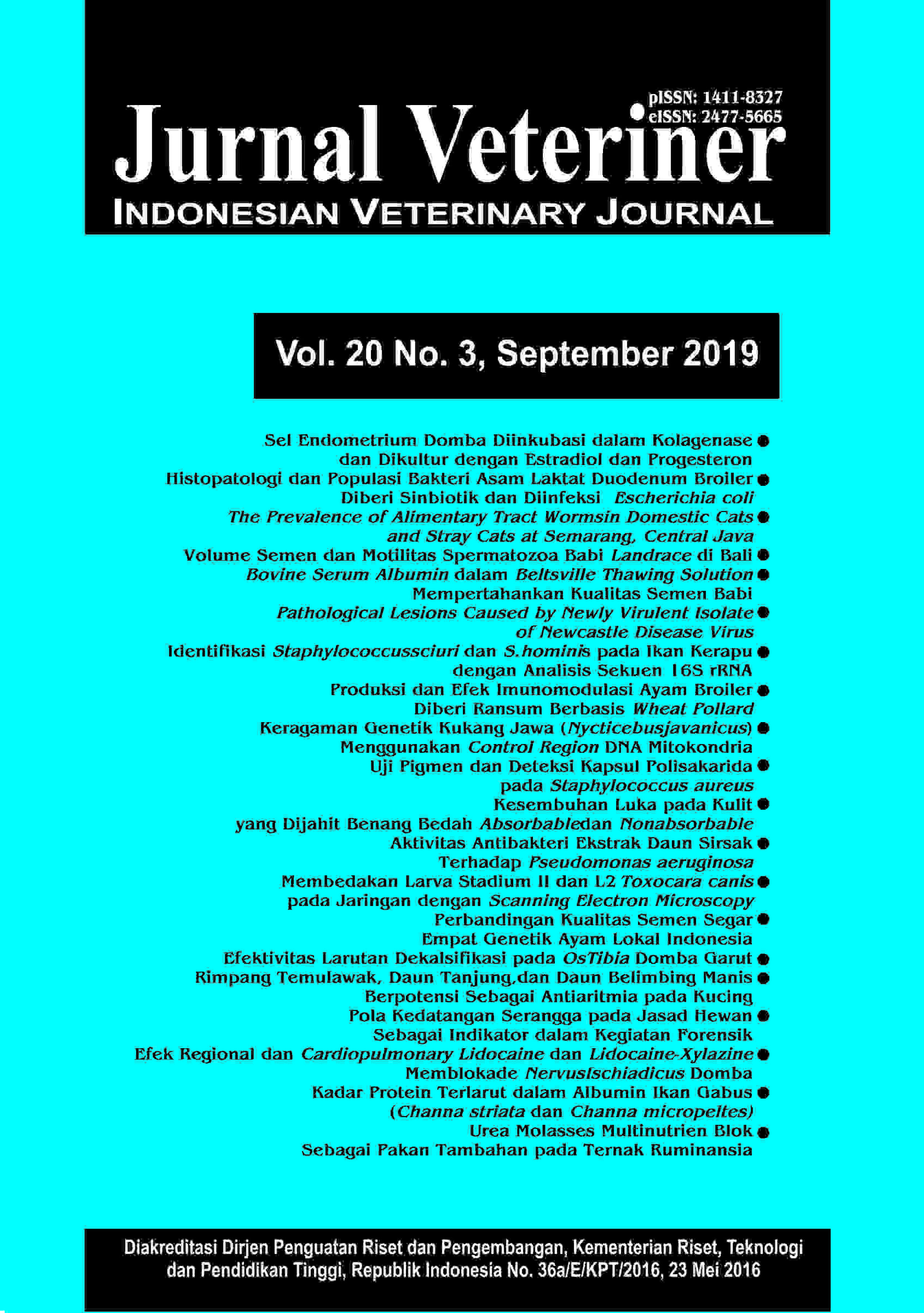Perbedaan Larva Stadium Kedua dan L2 Toxocara canis pada Jaringan Mencit Menggunakan Scanning Electron Microscopy (THE DIFFERENCES BETWEEN SECOND STAGE LARVAE AND L2 TOXOCARA CANIS ON MICE TISSUE BY USING SCANNING ELECTRON MICROSCOPY)
Abstract
Toxocariasis is one of zoonosis diseases that caused by Toxocara spp. that is Toxocara canis. Toxocara canis has several stages until it can infect animals and humans, namely the egg stage, larvae first stage (L1), larvae second stage (L2), larvae third stage (L3) to adult worms. Studies about the L2 and L2 tissue of T. canis found in paratenic hosts using Scanning Electron Microscopy (SEM) have not been widely performed. Some of the causes include L2 being not easily to found and identified, so research rarely raises the ultrastructural morphology of L2 and L2 tissues. Knowledge about the ultrastructural morphology of L2 and L2 tissue of T. canis worms is very important to determining the diagnosis, especially the etiological diagnosis. The purpose of this study is to detected morphology of L2 and L2 tissues of T. canis using SEM. Samples from this study is faeces of dogs that infected with toxocariasis and the digestive tract of dogs obtained from dog slaughter houses. The sample is an adult worm of T. canis; the female worm is dissected and taken uterus to collect worm eggs. The results of this study on microscopic and optilab examination showed a difference between L2 and L2 tissue that the length of L2 hatched from embryonic eggs was 390 ìm and with a width of 23.4 ìm at the midpoint of the body. Larvae second stage length from the infected somatic tissue is 410 ìm and the width is 22.5 ìm at the midpoint, and then difference in dorsal lip, cuticles, body ring, cervical alae, buccal capsul, tail.



















